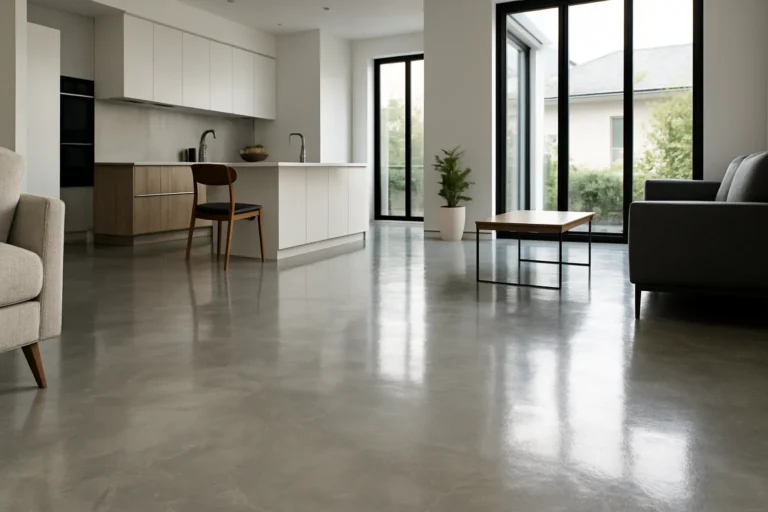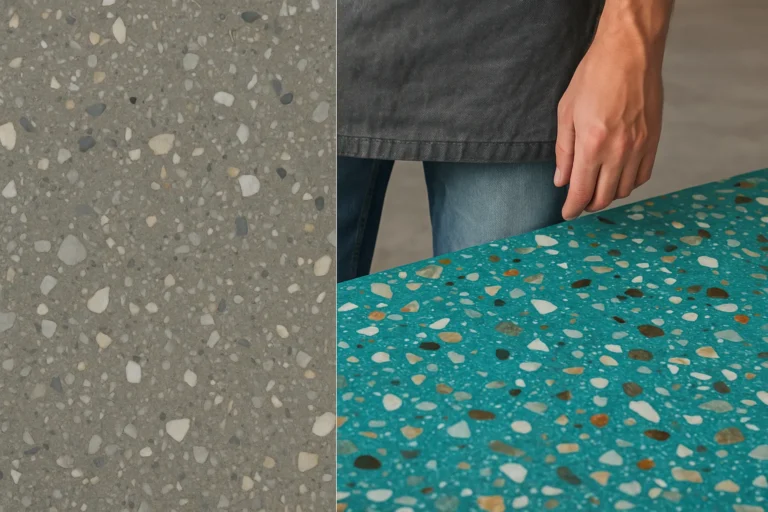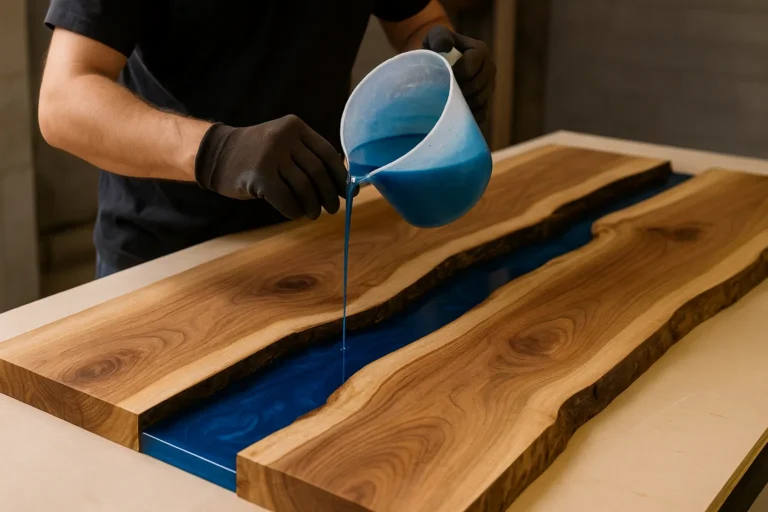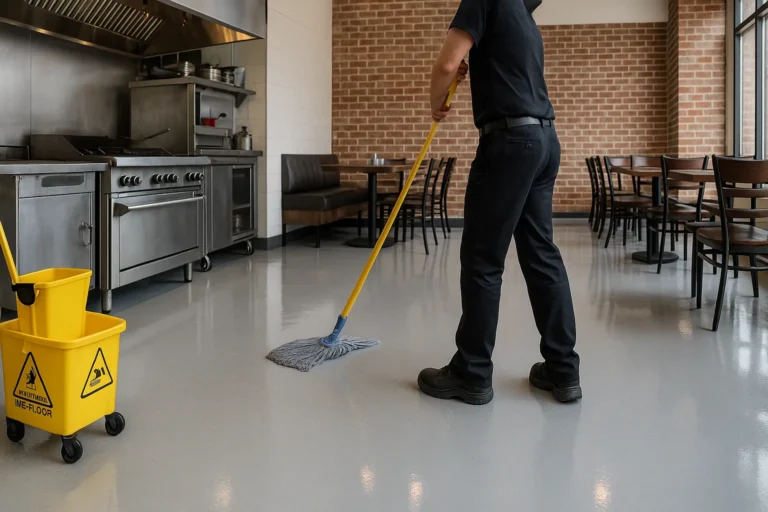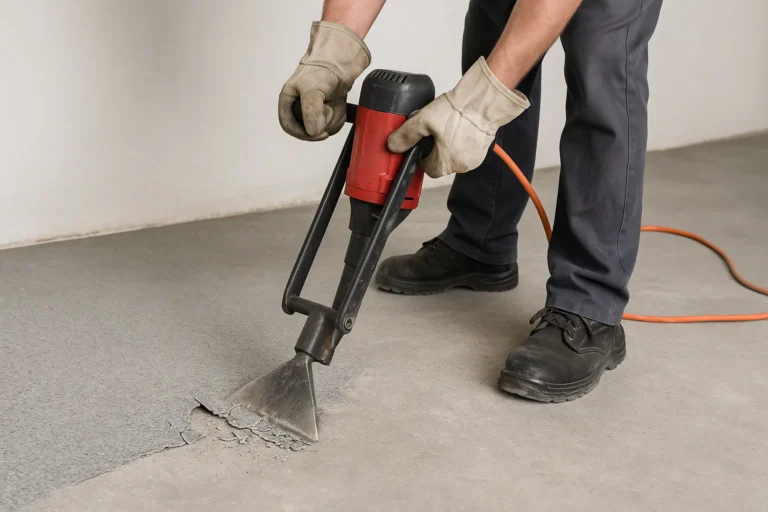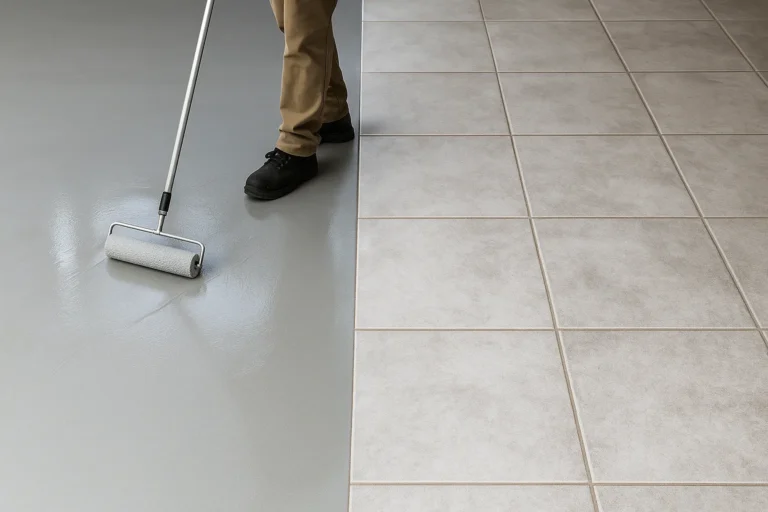What is Epoxy Flooring?
Epoxy flooring is a robust and versatile flooring solution made from a combination of resin and hardener. When these components are mixed, they form a rigid plastic material that is strong, durable, and resistant to degradation. This type of flooring is particularly popular in exhibition halls and museums due to its ability to withstand heavy foot traffic and its aesthetic appeal.
Epoxy flooring is not only durable but also customizable, allowing for a variety of finishes and colors. This makes it an ideal choice for spaces that require both functionality and visual appeal. Its seamless surface is easy to clean, which is crucial in maintaining the pristine condition of exhibition spaces.
- Made from resin and hardener
- Strong and durable
- Customizable finishes and colors
- Seamless and easy to clean
Benefits of Epoxy Flooring for Museums and Exhibition Halls
Epoxy flooring offers numerous benefits for museums and exhibition halls, making it a preferred choice for these spaces. One of the primary advantages is its durability, which ensures that the flooring can handle the constant flow of visitors without showing signs of wear and tear. Additionally, epoxy flooring is resistant to stains and spills, which is essential in environments where food and drinks might be present.
Another significant benefit is the aesthetic versatility of epoxy flooring. It can be customized to match the theme or design of any exhibit, enhancing the overall visitor experience. Furthermore, its reflective surface can improve lighting conditions, reducing the need for additional lighting fixtures.
- Highly durable and long-lasting
- Resistant to stains and spills
- Aesthetic versatility to match exhibit themes
- Reflective surface improves lighting
Different Areas Requiring Epoxy Flooring in Museums
In museums, different areas have varying flooring needs, and epoxy flooring can cater to all of them. High-traffic areas such as entrance halls and corridors benefit from epoxy’s durability, ensuring they remain in excellent condition despite heavy use. Exhibition spaces, where aesthetics are crucial, can take advantage of epoxy’s customizable designs to complement the exhibits.
Storage and back-of-house areas also benefit from epoxy flooring due to its resistance to chemicals and ease of maintenance. This ensures that even non-public areas of the museum are well-protected and easy to manage.
- Entrance halls and corridors
- Exhibition spaces
- Storage and back-of-house areas
Durable Flooring Solutions for High-Traffic Exhibition Areas
Importance of Durability in Museum Flooring
Durability is a critical factor in museum flooring due to the high volume of visitors these spaces attract. Flooring in museums must withstand constant foot traffic, as well as the movement of heavy exhibits and equipment. Epoxy flooring provides the necessary strength and resilience to handle these demands without compromising on appearance.
Moreover, durable flooring solutions like epoxy reduce the need for frequent repairs or replacements, which can be costly and disruptive. This makes epoxy flooring a cost-effective choice for museums looking to maintain their facilities efficiently.
- Withstands high foot traffic
- Handles movement of heavy exhibits
- Reduces need for repairs or replacements
Types of Epoxy Flooring for Museums and Exhibitions
There are several types of epoxy flooring available, each offering unique benefits for museums and exhibition halls. Self-leveling epoxy is ideal for creating a smooth, seamless surface that enhances the visual appeal of exhibition spaces. Mortar epoxy, on the other hand, is the most robust option, suitable for areas that require extra strength and durability.
Graveled epoxy provides a textured finish, which can be used for decorative purposes or to improve slip resistance. Each type of epoxy flooring can be tailored to meet the specific needs of different areas within a museum.
- Self-leveling epoxy for smooth surfaces
- Mortar epoxy for extra strength
- Graveled epoxy for decorative and slip-resistant finishes
Metallic Epoxy Flooring: Aesthetics Meets Performance
Metallic epoxy flooring is a popular choice for museums seeking to combine aesthetics with performance. This type of epoxy flooring incorporates metallic pigments, creating a unique, three-dimensional appearance that can mimic the look of marble or other high-end materials. The result is a stunning floor that enhances the visual impact of any exhibit.
In addition to its aesthetic appeal, metallic epoxy flooring offers the same durability and resistance to wear as other epoxy types. This makes it an excellent choice for high-traffic areas where both beauty and functionality are essential.
- Unique, three-dimensional appearance
- Mimics high-end materials like marble
- Combines aesthetics with durability
Museum Exhibit Design and Flooring Considerations
Integrating Flooring into Exhibit Design
Integrating flooring into exhibit design is crucial for creating a cohesive and immersive visitor experience. Epoxy flooring offers the flexibility to incorporate various colors, patterns, and textures that complement the overall theme of an exhibit. This integration can enhance the storytelling aspect of exhibits, making them more engaging for visitors.
By considering flooring as an integral part of exhibit design, museums can create spaces that are not only functional but also visually captivating. This approach ensures that every element of the exhibit works together to convey the intended message.
- Enhances storytelling and engagement
- Complements exhibit themes
- Creates cohesive and immersive experiences
Color and Pattern Options for Epoxy Floors
Epoxy flooring offers a wide range of color and pattern options, allowing museums to customize their floors to suit specific exhibit themes. From solid colors to intricate patterns, epoxy flooring can be tailored to match the aesthetic requirements of any space. This versatility ensures that the flooring enhances rather than detracts from the exhibits on display.
The ability to choose from various colors and patterns also allows museums to create distinct zones within their spaces, guiding visitors through different exhibits and enhancing the overall flow of the museum.
- Wide range of color options
- Customizable patterns
- Enhances exhibit themes and flow
Customization Possibilities for Unique Exhibits
Customization is a key advantage of epoxy flooring, offering museums the opportunity to create unique and memorable exhibits. With epoxy, museums can incorporate logos, graphics, or even 3D effects into the flooring, adding an extra layer of creativity to their exhibits. This level of customization ensures that each exhibit is one-of-a-kind and leaves a lasting impression on visitors.
By leveraging the customization possibilities of epoxy flooring, museums can differentiate themselves and create exhibits that stand out in the competitive cultural landscape.
- Incorporate logos and graphics
- Create 3D effects
- Differentiate and enhance exhibits
Installation and Maintenance of Epoxy Flooring in Museums
Professional Installation Process
The installation of epoxy flooring in museums requires professional expertise to ensure a flawless finish. The process begins with surface preparation, which involves cleaning and repairing the existing floor to create a suitable base for the epoxy. Once the surface is ready, the epoxy mixture is applied in layers, with each layer allowed to cure before the next is added.
Professional installation ensures that the epoxy flooring is applied correctly, resulting in a durable and visually appealing surface. This process minimizes the risk of issues such as bubbling or peeling, which can occur with improper installation.
- Surface preparation is crucial
- Applied in layers for durability
- Professional installation ensures quality
Maintenance Requirements for Epoxy Floors
Maintaining epoxy flooring in museums is relatively straightforward, making it an attractive option for busy exhibition spaces. Regular cleaning with a mild detergent and water is usually sufficient to keep the floors looking their best. Additionally, periodic inspections can help identify any areas that may require touch-ups or repairs.
The low maintenance requirements of epoxy flooring contribute to its cost-effectiveness, as it reduces the need for extensive cleaning or repairs. This allows museum staff to focus on other important tasks, such as curating exhibits and enhancing visitor experiences.
- Regular cleaning with mild detergent
- Periodic inspections for touch-ups
- Low maintenance and cost-effective
Longevity and Cost-Effectiveness
Epoxy flooring is known for its longevity, with a lifespan of 15-20 years when properly maintained. This makes it a cost-effective choice for museums, as it reduces the need for frequent replacements. The initial investment in epoxy flooring is offset by its durability and low maintenance requirements, resulting in long-term savings for museums.
In addition to its financial benefits, the longevity of epoxy flooring ensures that museum spaces remain visually appealing and functional for years to come. This contributes to a positive visitor experience and helps museums maintain their reputation for quality. Durable coworking epoxy is a strong glue used in shared workspaces It helps fix furniture and equipment to make them last longer in busy offices Vibrant epoxy options offer colorful and exciting choices for creating shiny surfaces on floors tables and artwork These eye-catching epoxy coatings come in many bright hues and can even include glitter or special effects
Sleek epoxy designs create smooth and shiny surfaces for floors tables and countertops Tough museum epoxy is a super strong glue used to fix broken objects in museums It helps keep ancient artifacts and valuable items together so people can see them for many years
UAE urethane epoxy is a strong and flexible coating used to protect surfaces It is commonly applied to floors walls and other areas to make them more durable Chemical resistant epoxies
Coating selection guide helps you choose the right paint or finish for different surfaces and materials
- Lifespan of 15-20 years
- Reduces need for replacements
- Long-term savings and visual appeal
Alternative Flooring Options for Museums and Galleries
Resin Flooring Systems
Resin flooring systems are an alternative to epoxy flooring, offering similar benefits in terms of durability and aesthetics. These systems are made from a combination of synthetic resins and hardeners, creating a strong and resilient surface. Resin flooring is available in various finishes, allowing museums to customize their floors to suit specific design requirements.
While resin flooring shares many of the advantages of epoxy, it may offer additional benefits such as enhanced chemical resistance or faster installation times. This makes it a viable option for museums seeking alternative flooring solutions.
- Strong and resilient surface
- Available in various finishes
- Enhanced chemical resistance
Terrazzo Flooring
Terrazzo flooring is another alternative for museums, known for its durability and unique appearance. This type of flooring is made from a mixture of marble, quartz, granite, or glass chips embedded in a cement or epoxy binder. The result is a visually striking surface that can be customized with different colors and patterns.
Terrazzo flooring is highly durable and can withstand heavy foot traffic, making it suitable for high-traffic areas in museums. Its unique appearance also adds an element of sophistication to museum spaces.
- Made from marble, quartz, granite, or glass chips
- Customizable colors and patterns
- Durable and visually striking
Concrete Flooring Solutions
Concrete flooring solutions offer a practical and cost-effective alternative for museums. Polished concrete provides a sleek and modern look, while stained or stamped concrete can mimic the appearance of more expensive materials. Concrete flooring is highly durable and can withstand the demands of high-traffic areas.
In addition to its durability, concrete flooring is easy to maintain and can be customized with various finishes and colors. This makes it a versatile option for museums seeking a balance between functionality and aesthetics.
- Polished, stained, or stamped finishes
- Highly durable and cost-effective
- Easy to maintain and customize
FAQs
How long does epoxy flooring last in a museum setting?
Epoxy flooring in museums can last 15-20 years with proper maintenance. This longevity is due to its durable nature and resistance to wear and tear. Regular cleaning and periodic inspections can help extend its lifespan even further.
Can epoxy flooring be used for outdoor exhibition spaces?
Epoxy flooring can be used for outdoor exhibitions when properly formulated for UV resistance and weather exposure. This ensures that the flooring remains durable and visually appealing despite environmental challenges. However, it is essential to choose the right type of epoxy for outdoor use to prevent damage.
What are the eco-friendly options for museum flooring?
Eco-friendly museum flooring options include recycled content epoxy, bio-based resins, and low-VOC formulations. These options reduce the environmental impact of flooring installations while maintaining durability and aesthetics. Choosing eco-friendly flooring solutions can also enhance a museum’s sustainability efforts.
How does epoxy flooring contribute to museum accessibility?
Epoxy flooring contributes to museum accessibility by providing smooth, level surfaces that are easy to navigate for visitors with mobility aids. This ensures that all visitors can enjoy the exhibits without barriers. Additionally, epoxy’s slip-resistant properties enhance safety for everyone.
What is the average cost of epoxy flooring for a museum?
The average cost of epoxy flooring for museums ranges from to 2 per square foot, depending on complexity and customization. This cost includes materials and professional installation. While the initial investment may be higher than other flooring options, the long-term benefits and durability make it a cost-effective choice.
